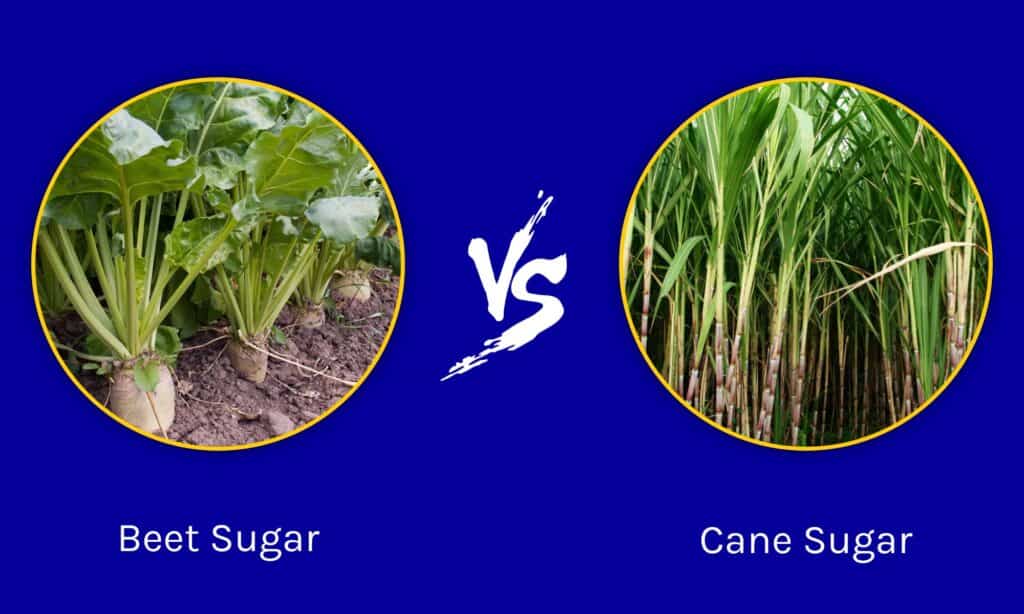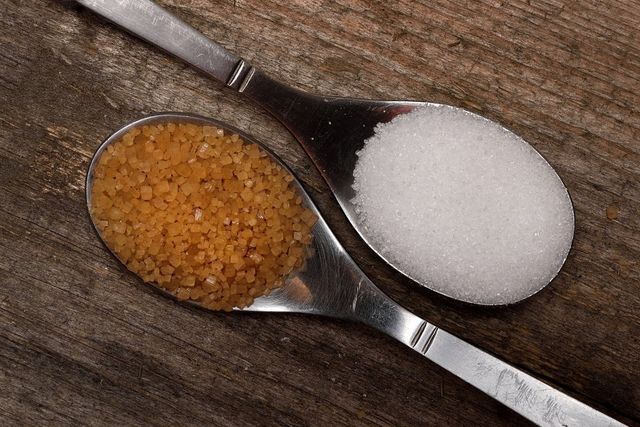A side-by-side comparison of sugar beet vs sugar cane for food security
The Significance of Sugar Beet Vs Sugar Cane: a Closer Look at Their Manufacturing Processes and Applications
The importance of sugar beet and sugar cane prolongs past their function as sources of sucrose. Each plant includes distinct making procedures that influence their applications throughout numerous industries. While sugar beet supports not simply food production but also biofuels and plant foods, sugar cane mostly offers the food sector with important byproducts. Understanding these distinctions discloses exactly how each crop forms agricultural economic climates and industry techniques around the world, motivating additional exploration into their special contributions.

Introduction of Sugar Beet and Sugar Cane
Sugar beet and sugar cane are two primary resources of sucrose, each with distinctive characteristics and cultivation methods. Sugar beet, a root veggie, flourishes in warm climates - Sugar beet vs sugar cane. It is grown mostly in the North Hemisphere and needs well-drained dirt. The plant commonly grows to an elevation of concerning 18 inches, with a white, fleshy origin having regarding 15-20% sucrose. On the other hand, sugar cane is an exotic turf that flourishes in warm, humid problems. It can get to elevations of as much as 12 feet and includes high, jointed stems that shop sucrose concentrations varying from 10-15%. The cultivation of sugar cane is labor-intensive and usually entails hands-on harvesting. Both plants act as crucial agricultural commodities, giving resources for sugar manufacturing and various by-products. Their farming practices substantially affect neighborhood economic situations and global sugar markets, making them important to the agricultural landscape
Collecting Techniques for Sugar Beet and Sugar Cane
Harvesting strategies for sugar beet and sugar cane vary considerably because of the special features of each crop. Sugar beet harvesting generally employs specialized machinery known as beet harvesters, which efficiently root out the beetroots from the dirt while minimizing damages. These devices utilize a collection of blades to cut the tops and lift the origins, ensuring that the beets remain intact for processing.In comparison, sugar cane harvesting typically entails 2 primary techniques: hand-operated cutting and mechanical harvesting. Hand-operated harvesting, still common in some regions, calls for employees to cut the cane stalks by hand utilizing machetes. This approach permits for discerning harvesting however is labor-intensive. Mechanical farmers have acquired appeal, utilizing revolving blades to cut and gather the stalks swiftly. Both approaches intend to enhance yield and quality, with mechanical harvesting significantly adopted to meet increasing manufacturing demands efficiently.
Handling Methods for Sugar Beet
After being harvested, sugar beets undergo a series of processing steps to extract sucrose efficiently. The initial step involves washing the beets to get rid of soil and impurities. Next off, the beetroots are sliced right into slim strips referred to as cossettes, which enhances the surface area for removal. These cossettes are after that subjected to hot water removal in a diffusion procedure, permitting sucrose to liquify right into the water.Following removal, the juice has impurities and is clarified utilizing lime and warmth to precipitate solids. The clarified juice is after that concentrated with evaporation, removing excess water and increasing sugar concentration. To crystallize the sucrose, the concentrated juice goes through additional dissipation and cooling, creating sugar crystals. These crystals are separated from the remaining syrup with centrifugation, dried, and packaged for distribution. This method assures a high yield of sucrose while keeping the quality of the last item.
Handling Techniques for Sugar Cane
Handling sugar cane includes a series of steps created to draw out sucrose efficiently. The process starts with harvesting, where mature sugar cane is cut and transferred to refining facilities. When at the mill, the cane goes through cleaning to eliminate pollutants. The following action is squashing, where mechanical rollers remove juice from the fibrous stalks.This juice is then cleared up using warm i was reading this and lime to get rid of suspended solids and pollutants. Complying with information, the juice is evaporated to focus the sugar material, causing a thick syrup. The syrup goes through formation, where sugar crystals form as the syrup cools. These crystals are divided from the remaining molasses through centrifugation.Finally, the sugar is dried out and packaged for distribution. This complete handling method guarantees that sugar cane generates a top quality item, appropriate for numerous cooking and industrial applications, while taking full advantage of the extraction of sucrose from the raw product.
Nutritional Differences Between Sugar Beet and Sugar Cane
The contrast between sugar beet and sugar cane extends beyond their handling approaches to incorporate significant dietary distinctions. Sugar beet consists of not only sucrose however additionally a variety of vitamins and minerals, including vitamin C, potassium, and magnesium. These nutrients contribute to its prospective wellness advantages, such as supporting immune function and preserving electrolyte balance. In comparison, sugar cane primarily offers sucrose with marginal degrees of crucial nutrients.Additionally, sugar beet has a greater fiber material, which can aid in digestion and advertise satiety. The presence of anti-oxidants in sugar beet may additionally use safety results against oxidative stress and anxiety, an aspect linked to numerous chronic conditions. While both sources are mainly utilized for sugar production, the nutritional accounts suggest that sugar beet might supply extra wellness advantages compared to sugar cane. This distinction is important for customers looking for greater than just sugar in their diet regimens.
Applications of Sugar Beet in Various Industries
A range of industries leverage sugar beet for its flexible applications beyond sugar production. In the food industry, sugar beet acts as a crucial ingredient in generating various processed foods, consisting of desserts and baked goods, because of its natural sweetness. Furthermore, the pulp originated from sugar beet is utilized as pet feed, supplying a nutrient-rich source for livestock.In the biofuel sector, sugar beet is increasingly recognized for its possibility in creating bioethanol, adding to renewable resource solutions. The farming sector benefits from sugar beet's byproducts, which can be used as natural fertilizers, improving soil wellness and fertility.Furthermore, sugar beet essences are utilized in pharmaceuticals and cosmetics, where they work as natural sweeteners and humectants. These varied applications highlight sugar beet's function as a beneficial source in enhancing sustainability and technology across multiple sectors, reinforcing its importance in modern production practices.
Applications of Sugar Cane in Various Industries

Frequently Asked Concerns
What Environmental Influences Are Related To Sugar Beet and Sugar Cane Production?
The ecological impacts of sugar beet and sugar cane manufacturing include dirt degradation, water usage, pesticide application, and environment interruption. These factors add to environmental inequalities, raising problems concerning sustainability in farming read this article techniques related to both crops.

Just How Do Sugar Beet and Sugar Cane Contrast in Regards To Economic Feasibility?
The financial feasibility of sugar beet and sugar cane varies based on aspects like geographic area, manufacturing prices, and market demand - Sugar beet vs sugar cane. Both crops provide unique advantages, affecting Homepage farmers' decisions pertaining to farming and financial investment in different areas
What Are the Main Regions for Sugar Beet and Sugar Cane Farming?

Just How Does Environment Impact the Growth of Sugar Beet and Sugar Cane?
Environment considerably impacts the development of sugar beet and sugar cane. Sugar beets flourish in cooler temperatures, while sugar cane requires warm, exotic problems. Sugar beet vs sugar cane. Both crops depend on adequate rainfall and sunlight for suitable advancement and yield
Are There Any Kind Of Significant Health Issues Connected To Consuming Sugar From These Resources?
Health worries associated to sugar usage consist of excessive weight, diabetic issues, and heart problem. Both sugar beet and sugar cane-derived sugars can add to these concerns, especially when eaten in too much quantities, despite their source.